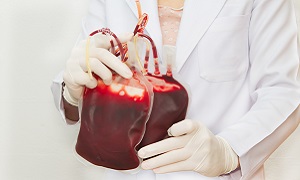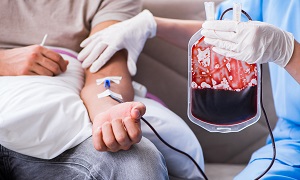Aplastic Anemia
Aplastic anemia is a rare but treatable disorder, in which your bone marrow, i.e. the spongy stuff inside your bones, stops producing new blood cells. Although in some cases, it ceases making just one of the types, more often, you can end up becoming low on all three types, i.e., red, white, and platelets.
This condition can come slowly or develop all of a sudden. This condition can also get life-threatening if your blood count gets low enough.
Although this condition can occur among anyone, it is more likely to happen to people in their late teens and early 20s, as well as the elderly. This condition can occur equally among males and females. It is also more common in developing countries.
Aplastic anemia is generally of two types-
- Acquired Aplastic anemia, and
- inherited aplastic anemia.
Symptoms
Aplastic anemia doesn’t generally show any symptoms. However, sometimes, when present, some of the signs and symptoms may include:
- Fatigue
- Shortness of breath
- Unexplained or easy bruising
- Skin rash
- Rapid or irregular heart rate
- Pale skin
- Frequent or prolonged infections
- Dizziness
- Nosebleeds and bleeding gums
- Prolonged bleeding from cuts
- Headache
- Fever
Aplastic anemia may be short-lived, or in some cases, it may become chronic as well. It might even be severe or fatal.
Causes & risk factors
Stem cells in your bone marrow produce blood cells, i.e., red cells, white cells, and platelets. In aplastic anemia, the stem cells are damaged, due to which the bone marrow is either empty, i.e., aplastic, or may contain few blood cells.
The most common cause of this condition is your immune system attacking the stem cells of the bone marrow. There are a few other factors as well, which can lead your immune system to attack the stem cells in your bone marrow.
- Exposure to toxic chemicals- Toxic chemicals, including some of the ones used in pesticides and insecticides, and benzene, an ingredient in gasoline, have been linked to this condition. Your condition might improve if you avoid repeated exposure to these certain chemicals.
- Radiation and chemotherapy treatments- While these cancer-fighting therapies are able to eliminate cancer cells, they might also damage healthy cells, which can include stem cells in the bone marrow. Aplastic anemia, in some cases, can result in a temporary side effect of these treatments.
- Autoimmune disorders- An autoimmune disorder, in which your immune system attacks the healthy cells, might also involve your stem cells in the bone marrow.
- A viral infection- Viral infections that affect bone marrow might also lead to the development of aplastic anemia. Viruses that have been linked to this condition include hepatitis, cytomegalovirus, Epstein-Barr, parvovirus B19 as well as HIV.
- Use of certain drugs- Some medicines, such as those used for the treatment of rheumatoid arthritis and some antibiotics, may also aplastic anemia.
- Pregnancy- Your immune system can attack the bone marrow during pregnancy.
- Unknown factors- In several cases, doctors are unable to identify what causes the aplastic anemia (idiopathic aplastic anemia).
Aplastic anemia is a rare condition, and some of the factors that increase its risk include:
- Treatment with high-dose chemotherapy or radiation
- Exposure to toxic chemicals
- Certain blood diseases, autoimmune disorders, and serious infections
- Pregnancy, rarely
- The use of some prescription drugs
Diagnosis
Generally, aplastic anemia is diagnosed with the help of the following:
Blood Tests
Bone Marrow Biopsy
In this method, a doctor uses a needle in order to remove a tiny sample of bone marrow from a large bone in the body, such as the hipbone. This sample is next examined with the help of a microscope, to rule out any other diseases. In aplastic anemia, the bone marrow contains fewer blood cells than normal. For confirming a diagnosis of aplastic anemia, a bone marrow biopsy is required.
Once you receive a diagnosis of aplastic anemia, you might also need a few other tests so that your doctor is able to determine the cause.
Treatment options
The treatments that might be used for aplastic anemia depend on the severity of your condition, as well as your age.
Stem cell transplant
A stem cell transplant for rebuilding the bone marrow with stem cells from a donor may be the only successful treatment option for people having a severe form of aplastic anemia. A stem cell transplant which is also referred to as a bone marrow transplant is generally the most common treatment for people who are younger and also have a matching donor. Most often, the donor is a sibling.
If a donor is found, the diseased bone marrow is first depleted with the help of chemotherapy or radiation. Next, healthy stem cells from the donor are then filtered from the blood. Next, the healthy stem cells are injected into the bloodstream intravenously, where they migrate to the bone marrow cavities and then begin creating new blood cells.
This procedure generally requires a lengthy stay at the hospital. After the transplant, you are going to receive drugs for preventing the rejection of the donated stem cells.
A stem cell transplant also carries certain risks. Your body might reject the transplant, which can lead to life-threatening complications. In addition, everyone may not be a candidate for transplantation or may not find a suitable donor.
Blood transfusions
There is generally no limit to the number of blood transfusions you can have, but in some cases, multiple transfusions may lead to complications. Transfused red blood cells also contain iron, which might eventually accumulate in your body and can cause damage to any vital organs if an iron overload is not treated. Medications may also help rid your body of excessive iron.
Eventually, your body might develop antibodies to transfused blood cells, thus, making them less effective at relieving the symptoms. With the use of immunosuppressant medication, this complication gets a little less likely.
Immunosuppressants
For people who are unable to undergo a bone marrow transplant or people, for whom the autoimmune disorder is the cause of their condition, treatment may involve drugs for altering or suppressing the immune system, which is termed as immunosuppressants.
Although they are quite effective, these drugs can cause your immune system to weaken even further. It’s also possible that the anemia might return after you stop taking these drugs.
Antibiotics, antivirals
Having aplastic anemia causes your immune system to weaken, which can leave you more prone to infections.
If you are having aplastic anemia, then you need to see your doctor at the first sign of infection, such as fever. The infection should not be allowed to worsen, since it might prove life-threatening. If you are having severe aplastic anemia, your doctor may prescribe antibiotics or antiviral medications so that you can prevent any infections.
Bone marrow stimulants
Other treatments
Aplastic anemia which is caused by radiation and chemotherapy treatments for cancer can improve after the treatments stop. The same is also applicable to most of the other drugs that induce aplastic anemia.
Pregnant women who are suffering from aplastic anemia are treated with blood transfusions. For many women, after their pregnancy ends, their condition improves. However, if this isn’t the case, then treatment becomes necessary.







